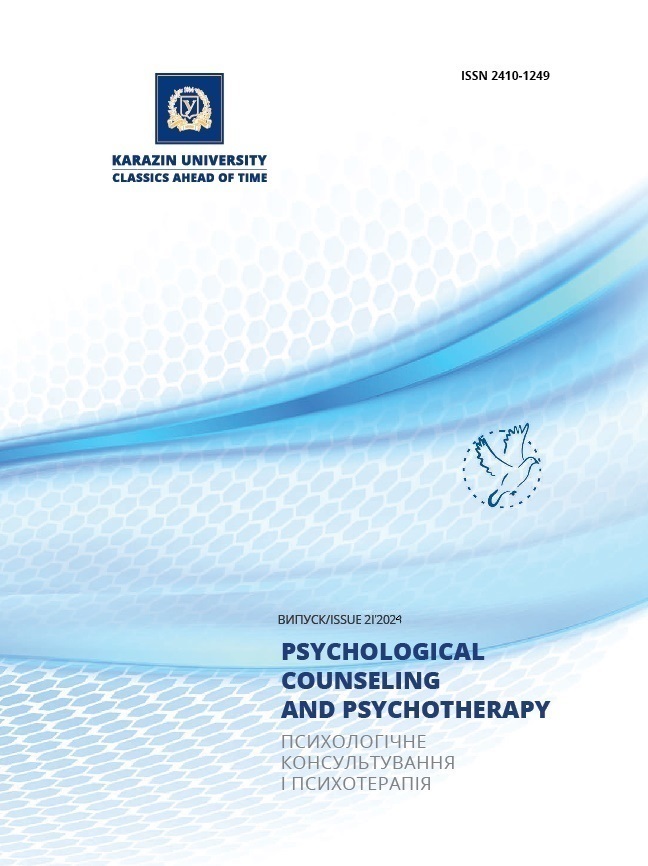Intensity of Sexual Desire: Norm and Pathology. Discussion on the Topic
Abstract
The intensity of sexual desire can be various and ranges in a certain continuum. One of its poles is occupied by absence of sexual desire, the other one having its pathological increase. Among the sex desire disorders its weakening is most commonly diagnosed disorder (in 33.4% of women, topping other sexopathological symptoms, and in 15.8% of men). The article contains definitions of hypoactive sexual desire in ICD-10 (1992), ICD-10 Research Diagnostic Guidelines (RDG) (1993) and ICD-11. According to ICD-10 RDG, one of general diagnostic criteria of sexual dysfunctions consists in duration of their existence, which should last at least 6 months. As for general diagnostic criteria of sexual dysfunctions, ICD-11 isolates such as presence of their existence during at least a few months and necessity of existence of clinically significant distress associated with the above dysfunctions. These criteria are also reflected in the characteristic of hypoactive dysfunction of sexual desire (HA00) in ICD-11. Such diagnostic criteria were absent in ICD-10 (1992). In this connection the following questions arise: (1) Why does diagnosing of sexual dysfunction require such a long period of its existence? (2) What must the physician and patient do during this period: wait until the sexual disorder may smooth over spontaneously or record further decreases in the patient’s quality of life? (3) Why is a specialist in the field of sexual health, who has received occupational training, unable to make a proper diagnosis before the end of at least 3-month period? Another aspect of the problem consists in the ability to diagnose one or another sexual dysfunction in ICD-11 only in the case when the sexual problem is associated with clinically significant distress. As it was previously stated, the diagnostic manual (ICD-11), which was preparing, would set its sights on absence of any standards of sexual activity. If an individual is satisfied with his/her sexual activity, the possibility of making the diagnosis of sexual dysfunction is immediately excluded. The characterized approach blurs the conception of norm and pathology. But it should be noted that hypoactive dysfunction of sexual desire is presented in the approved ICD-11 rather broadly, and though the presence of personality distress, associated with the above dysfunction, is one of its diagnostic criteria, such a harsh approach to its diagnosis, which took place at the stage of preparation of this classification, is not noted. In the author’s opinion, the assertion that asexuality may be one of the normal manifestations is not justified and the notion of “healthy asexuality” is paradoxical.
Downloads
References
Bell, A. P.; Weinberg, M. S. (1978). Homosexualities. A Study of Diversity Among Men and Women. NY: Simon and Schuster, 1978.
Blumstein, P.; Schwartz, P. (1983). American Couples. New York: William Morrow and Company, Inc.
Diagnostic and Statistical Manual of Mental Disorders. Fifth Edition. (2013). United States: American Psychiatric Association. 947 p.
ICD-11 for Mortality and Morbidity Statistics. 2024-01. https://icd.who.int/browse/2024-01/mms/en#1189253773
Kelly, G. F. (2000). Fundamentals of modern sexology. St. Petersburg: Piter. 896 p.
Kocharyan, G. S. (2021). Diminished libido, its manifestations and definitions of hypoactive sexual desire disorder. Health of Man, No4 (79), 90–97. https://doi.org/10.30841/2307-5090.4.2021.252407
Kocharyan, G. S. (2008). Homosexuality and the modern society. Kh.: EDENA. 240 p.
Kocharyan, G. S. (2023). Hypnosuggestion in increasing sexual desire. Clinical observation. Health of Man, 2(85), 31–35. https://doi.org/10.30841/2786-7323.2.2023.286434
Kocharyan, G. S. (2022). Hypoactive sexual desire due to physiological conditions, influences of social and psychological factors, disregard for sexual needs of a woman. Health Man; 82(3), 56–65. https://doi.org/10.30841/2307-5090.3.2022.270828
Kocharyan, G.S. (2024). Hyposexuality its overcoming. Kharkov: Publisher O. A. Miroshnichenko. 390 p.
Kocharyan, G. S. (2022). Prevalence of diminished libido and hypoactive sexual desire disorder. Health of Man, 4(79), 72–78. https://doi.org/10.30841/2307-5090.4.2021.252399
Kocharyan, G. S. (2024). Sexual constitution and sexual biography. Health of Man, 1(88), 35–39. https://doi.org/10.30841/2786-7323.1.2024.303816
Kon, I. S. (2006). Faces and masks of same-sex love. Moonlight at dawn. 2nd ed., revised and expanded. M.: Astrel, AST. 574 p.
Laumann, E. O.; Gagnon, J. H.; Michael, R. T.; Michaels, S. (1994). The Social Organization of Sexuality: Sexual Practices in the United States. Chicago: The University of Chicago Press.
Laumann, E. O.; Paik, A.; Rosen, R. C. (1999). Sexual Dysfunction in the United States. JAMA, 281(6), 537–544. https://doi.org/10.1001/jama.281.6.537
Leiblum, S. R., editor. (2010). Chapter 1. Introduction and Overview. Clinical Perspectives on and Treatment for Sexual Desire Disorders. Treating Sexual Desire Disorders. A Clinical Casebook. New York; London; The Guilford Press. 1–22.
Life without sex: who are asexuals and antisexuals. https://img1.zolushka-project.com/img/full/d84f9dbdcd4a4fc77baea6cead6376c06fe7fe84.jpeg
Reed, Geoffrey M.; Drescher, Jack; Krueger, Richard B; Atalla, Elham; Cochran, Susan D; First, Michael B.; Cohen-Kettenis, Peggy T.; Arango-de Montis, Iván; Parish, Sharon J.; Cottler, Sara; Briken, Peer; Saxena, Shekhar. (2016). Disorders related to sexuality and gender identity in the ICD-11: revising the ICD-10 classification based on current scientific evidence, best clinical practices, and human rights considerations. World Psychiatry, 15(3), 205–221. https://doi.org/10.1002/wps.20354
The ICD-10 Classification of Mental and Behavioural Disorders. Diagnostic criteria for research. Geneva: World Health Organization, 1993. Reprinted 1997, 2003. Printed in Switzerland, reprinted in Malta. https://iris.who.int/bitstream/handle/10665/37108/9241544554.pdf
The ICD-10 classification of mental and behavioural disorders: clinical descriptions and diagnostic guidelines. (1992). Geneva: World Health Organization.
Vasilchenko, G.S. (1977). Sexual constitution. General sexopathology. Manual for physicians. Moscow: Medicine. 216–233.








